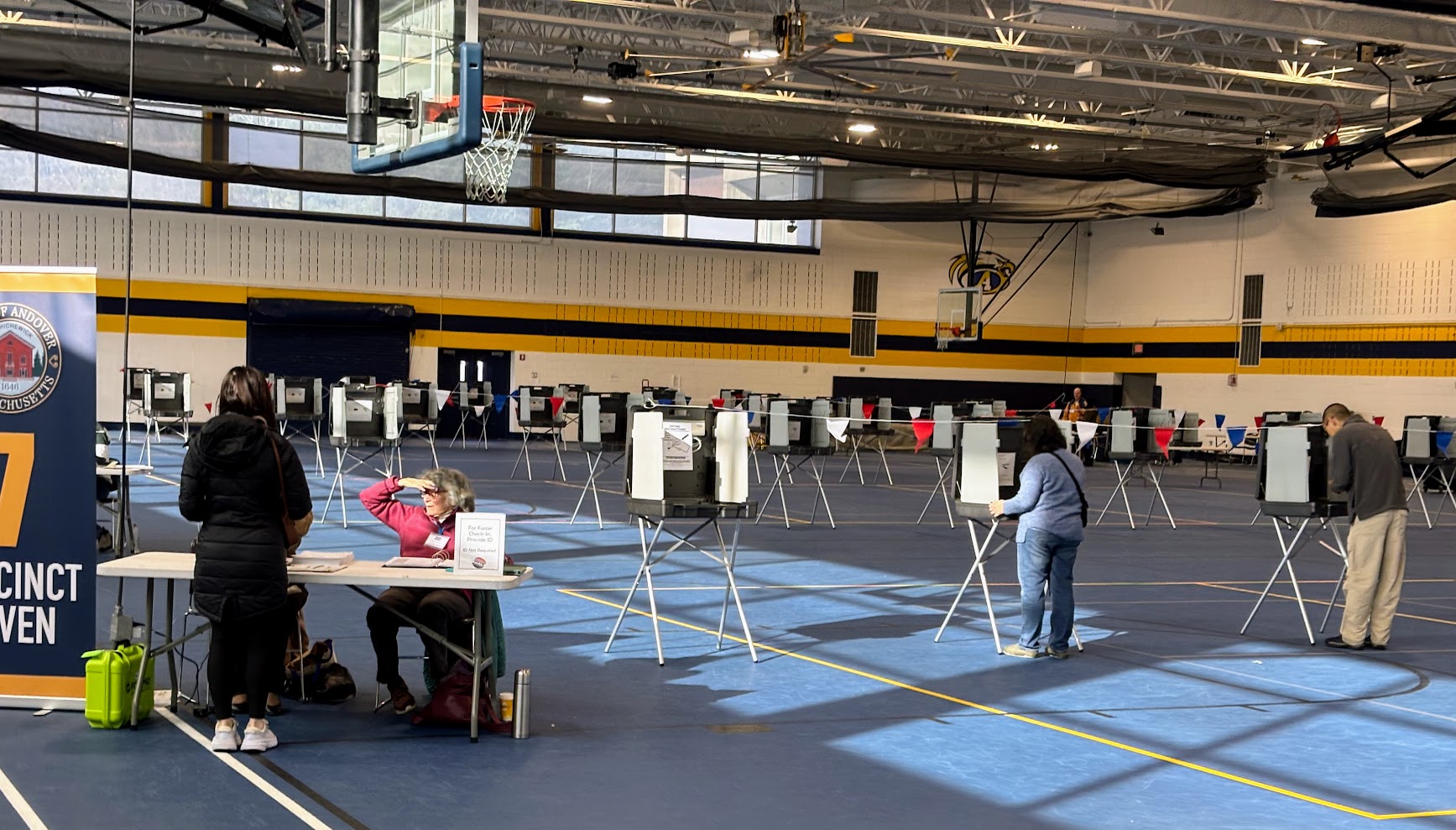Far fewer Andover residents are mailing in their ballots, even when compared to pre-pandemic numbers, town data shows.
Town officials report that 213 mail-in ballots were received in Andover’s last town election in March out of 3,156 votes total (6.7% voted by mail in). This is a roughly 44-percentage-point difference from the 2024 town election, which had received 2,585 total mail-in ballots from both early and absentee voters out of 5,142 votes (50.3% voted by mail-in).
In the wake of the 2024 presidential election and debates surrounding the reliability of mail-in voting, residents seem to have shifted to other means of voting, if they decide to cast their ballot at all. Nearly 2,000 fewer total voters participated in the 2025 local election in Andover than in 2024, according to records from the Andover Town Clerk Austin Simko’s office, though Simko says that these numbers are largely dependent on which candidates are up for election each year.
Between the 2018 and 2022 presidential primaries, the office reported a more than 80-percent downturn specifically in mail-in ballots, a trend continued during this last town election.
This story was published as part of a collaboration between Andover News and the Department of Journalism in Boston University’s College of Communication. The student journalist is a member of Professor Meghan E. Irons’s Reporting in Depth class.
This data diverges from what town officials and people familiar with Andover’s election system expected. Although there were fewer overall votes in the most recent presidential election, that doesn’t account for the high rate of decline in mail-in voting in Andover, whether people were voting in a town, state or national election.
“I think mail-in voting has probably helped with our elections and participation,” Stefani Traina, former president and current member of the League of Women Voters of Andover and North Andover, said before the data was compiled. “I wonder what their participation has shown over the last few years since… you could do mail-in voting by right.”
In state elections between 2018 and 2022, mail-in voting decreased by about 88 percent, according to town data. This slump was also shown in the 2018 and 2022 Andover local elections, through a downturn of 42 percent. Despite the increase in exposure to mail-in ballots from the pandemic lockdown, fewer people are choosing to vote by mail in Andover now than before the pandemic had begun.
This trend clashes with the newer, more lax rules surrounding who is allowed to vote by mail introduced during the pandemic. Prior to COVID, Andover residents were only able to mail in their ballots without an absentee excuse during the early voting period of an election. For absentee non-early voting, individuals needed an excuse to justify the absentee ballot, said Town Clerk Auston Simko.
After 2020, the rules surrounding ballot casting changed to allow mail-in voting to be excuse-free. As long as individuals filled out a form indicating that they would prefer to vote by mail and then turned in their ballot before the election deadline, their vote would count, said Simko.
One possible explanation for the downward trend is decreased civic education. Alix Driscoll, a former poll worker and member of the League of Women Voters, said that she got the impression that voter education in town has been declining over the past half century.
“At least half [of voters] came in with kind of a starry eyed look. ‘Am I at the right place?’” Driscoll said. “So we figure out [if they are] at the right place by their address, and then they [ask] ‘Well, how does this all work?’
“There are many people who maybe had never voted, had never voted in Andover, or just plain didn’t know how to do it, but they wanted to vote,” she said.
Another reason that could explain the nearly 92-percent decrease in mail-in ballots for this year’s town election could also be explained by Massachusetts state mail-in voting practices. According to Simko, since this year is not a state election year, Massachusetts residents are not automatically mailed vote-by-mail applications. Instead, they must go out of their way to seek out applications from their own municipal governments, possibly disincentivizing individuals to seek this form of voting.
“I think a lot of people like to vote in-person, whether it’s early in-person or on election day, for sentimental reasons,” said Simko. “People like to come in, cast their ballot, see their neighbors, that kind of thing.”

